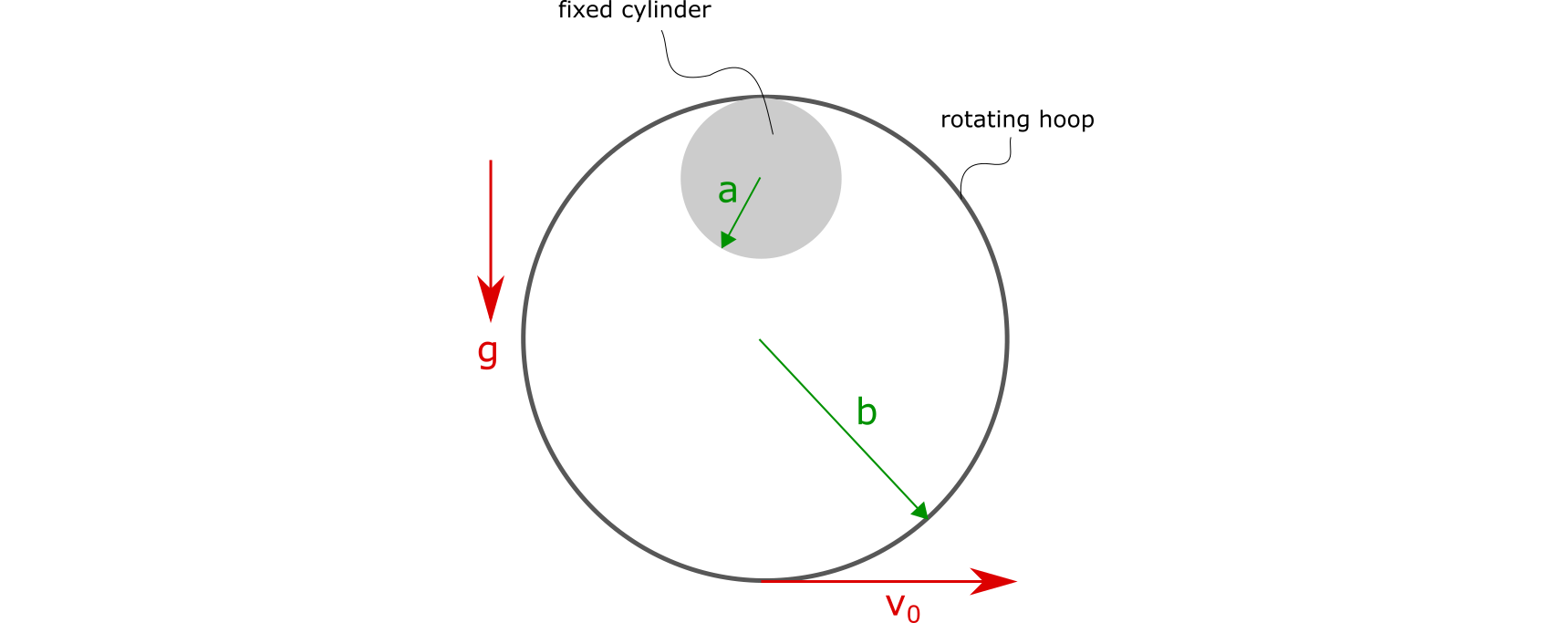A cylinder of radius $a$ is fixed in space. A hoop of mass $m$ and radius $b$ is in contact with the surface of the cylinder and it is able to rotate around of it without slipping. The force of gravity is acting on the system (figure below).
At $t=0$, the hoop is at rest and a tangential velocity $v_0$ is imposed in the lowest point of the hoop.
¿What must be the minimum magnitude of $v_0$ in order to make the hoop perform a complete loop around the cylinder?
I have no idea what condition must be imposed in order to describe the complete loop around the cylinder and then computing $v_0$. I think it has something to do with the rolling constraint and that the center of mass (COM) of the hoop must describe a complete arc lenght $2\pi(b-a)$.
The initial condition must be $\dot{\alpha}(t=0)=v_0/b$ (it comes from $\boldsymbol{v}_\perp=\boldsymbol{\omega}\times\boldsymbol{r}$), where $\alpha$ is the angle between a vertical axis fixed at the COM of the cylinder and a vertical axis at the COM of the cylinder.

